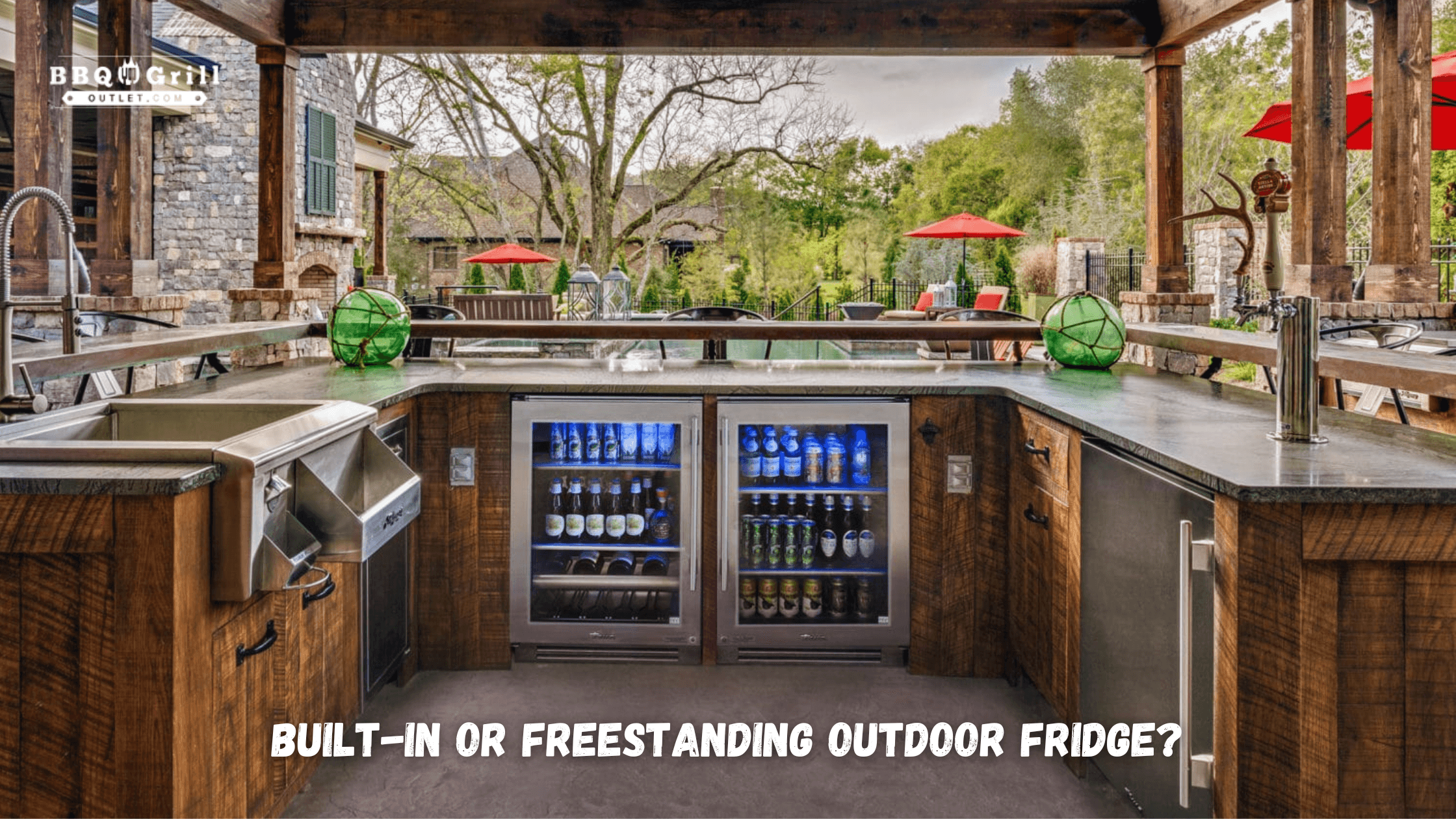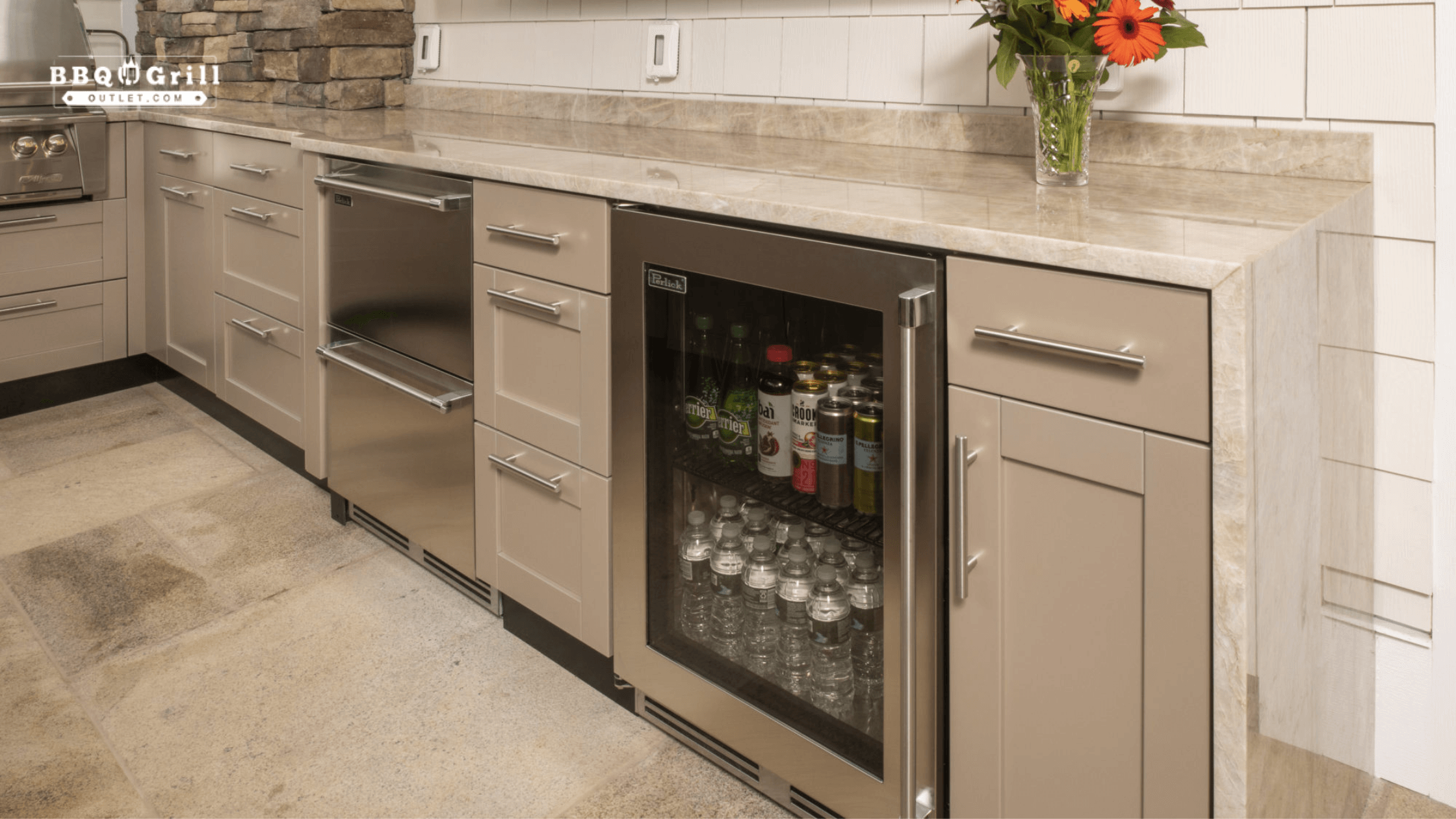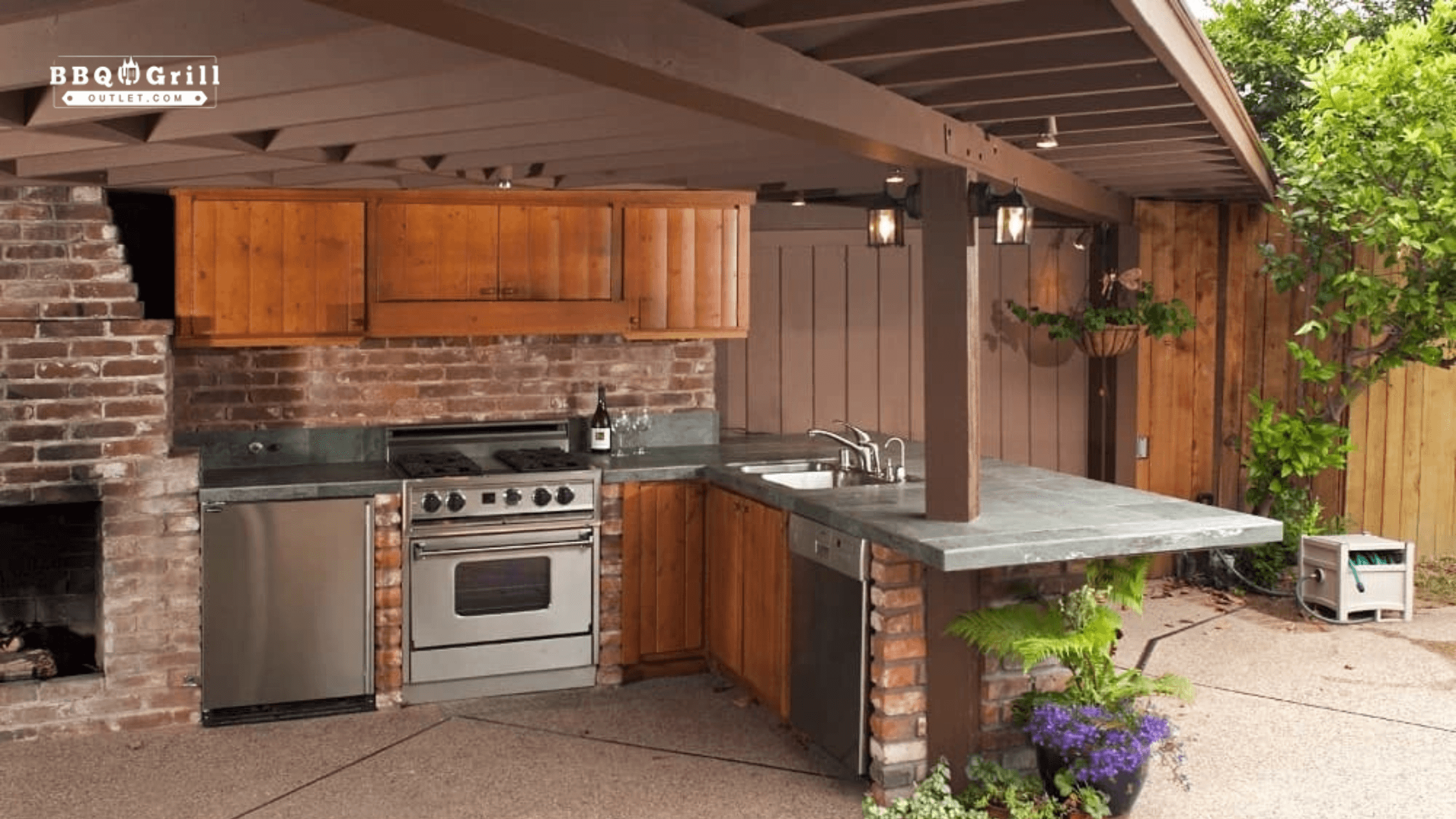Outdoor Refrigerator Installation: Tips for a Perfect Setup
Posted by Gregg Schoenborn on 6th May 2025
Outdoor refrigerator installation is a crucial step in creating a functional and efficient outdoor kitchen, ensuring easy access to cold drinks, fresh ingredients, and perishable items while you grill and entertain. Proper planning is essential to guarantee safety, efficiency, and long-term durability.
In this comprehensive guide, we’ll walk you through the step-by-step process of installing an outdoor kitchen fridge, covering placement, ventilation, power supply, and weatherproofing to help you maximize your outdoor cooking space.

Why Install an Outdoor Refrigerator?
Having a dedicated outdoor fridge enhances your BBQ area, making food prep more efficient and reducing trips back to the indoor kitchen. With a well-installed refrigerator, you can store marinated meats, condiments, beverages, and side dishes conveniently close to your grill and cooking station.
However, outdoor appliances face harsher conditions than indoor models. That’s why proper installation is key to ensuring your refrigerator operates efficiently and lasts for years.

Choosing Between Built-in vs. Freestanding Outdoor Fridges
Before starting your outdoor refrigerator installation, you must decide between a built-in or freestanding model.
A. Built-in Outdoor Refrigerators
A built-in outdoor refrigerator is designed to fit seamlessly into an outdoor kitchen or BBQ island. These units require proper ventilation to prevent overheating and should be installed with front-facing vents.
Pros:
- Sleek, integrated look
- Space-saving design
- Ventilation built into the front
Cons:
- More expensive
- Requires professional installation
B. Freestanding Outdoor Refrigerators
A freestanding fridge can be placed anywhere in your patio or backyard, as long as it has proper ventilation requirements and protection from the elements.
Pros:
- More affordable
- Easier to install
- Portable and flexible placement
Cons:
- Takes up more space
- Requires extra protection from weather

Outdoor Kitchen Fridge Placement - Where to Install It
Proper outdoor kitchen fridge placement ensures easy access while maximizing efficiency and durability.
Keep these key factors in mind when choosing the perfect spot:
- Keep It Near the Cooking and Prep Area
The fridge should be within reach of your grill and prep station to streamline meal prep. However, keep it a few feet away from the grill to avoid heat exposure.
- Provide Proper Ventilation
Adequate ventilation requirements prevent overheating, especially for built-in fridges. Ensure there’s enough airflow around the unit, particularly if it’s installed in a cabinet or island.
- Avoid Direct Sunlight
Placing your fridge in a shaded area extends its lifespan and prevents overworking the cooling system. A covered patio, pergola, or outdoor kitchen structure can offer protection.
- Ensure a Level Surface
A level surface prevents strain on the compressor and ensures even cooling. Use a solid, non-porous surface like concrete or stone to keep the fridge stable.

Ventilation Requirements for Outdoor Refrigerators
Ventilation is critical for maintaining the efficiency of your outdoor fridge. Poor airflow can cause overheating, leading to increased energy consumption and potential damage.
- Front Ventilation for Built-in Models
If installing a built-in outdoor refrigerator, choose a unit with front-facing vents. This design allows proper airflow within a BBQ island or cabinet enclosure.
- Side and Rear Ventilation for Freestanding Models
For freestanding refrigerators, leave at least 2 to 3 inches of space around the sides and back for proper air circulation. Avoid placing it against walls or barriers that block airflow.
- Use Vent Panels for Enclosures
If your outdoor fridge is housed within a cabinet, install ventilation panels to allow hot air to escape and prevent overheating.

Power Supply for Outdoor Fridge - Electrical Requirements
An outdoor refrigerator requires a reliable power source.
Stick to these essential tips for a safe and efficient setup:
- Dedicated GFCI Outlet
Always use a ground-fault circuit interrupter (GFCI) outlet to protect against electrical hazards, especially in wet outdoor environments.
- Weatherproof Electrical Setup
Use outdoor-rated electrical wiring and weatherproof covers to protect the outlet from moisture and rain.
- Voltage and Amperage Considerations
Most outdoor fridges operate on 120V, but check the manufacturer’s specifications to ensure compatibility with your power source.
- Avoid Extension Cords
Using an extension cord can lead to power fluctuations and safety risks. Instead, hire an electrician to install a dedicated outlet close to the fridge’s location.

Weatherproofing Outdoor Appliances for Longevity
Since outdoor refrigerators are exposed to the elements, weatherproofing is essential for protecting your investment.
- Choose a Weatherproof Refrigerator
Only use outdoor-rated refrigerators designed to withstand temperature fluctuations, humidity, and rain. Indoor models won’t function properly in extreme outdoor conditions.
- Use a Cover When Not in Use
A heavy-duty appliance cover protects your fridge from dust, debris, and harsh weather when not in use.
- Elevate the Fridge Off the Ground
Raising your refrigerator on a platform or outdoor-rated stand prevents water damage from rain or flooding.
- Regular Maintenance and Cleaning
- Clean the condenser coils every few months
- Wipe down the exterior to prevent rust
- Check the door seals for a proper airtight closure

Installation - Step-by-Step Guide
Step 1: Choose the Right Location
Pick a shaded, level spot near your cooking area but away from direct heat. Ensure proper ventilation around the fridge.
Step 2: Prepare the Surface
Use a stable, non-porous surface like concrete or stone to support the fridge’s weight.
Step 3: Install Electrical Connections
Set up a dedicated GFCI outlet close to the fridge. Ensure all wiring is outdoor-rated and protected.
Step 4: Position and Secure the Fridge
- For built-in models, install within the enclosure, ensuring proper venting.
- For freestanding models, allow adequate space for airflow.
Step 5: Test the Unit
Plug in the fridge, set the temperature, and monitor performance for the first few hours.

Outdoor Refrigerator Maintenance for Long-Lasting Performance
Proper maintenance is key to keeping your outdoor refrigerator running efficiently for years to come. Regularly cleaning the condenser coils, checking door seals, and protecting the unit from extreme weather will help prevent breakdowns and extend its lifespan.
For a detailed guide on keeping your outdoor fridge in top shape, check out our in-depth outdoor refrigerator maintenance blog!
Conclusion
An outdoor refrigerator transforms your outdoor kitchen, adding convenience and efficiency while you entertain. By ensuring proper fridge placement, ventilation, power supply, and weatherproofing, you can enjoy a durable and high-performing setup.
At BBQ Grill Outlet, we offer top-quality outdoor refrigerators, BBQ grills, and cooking accessories to help you build the perfect outdoor space. Call us today at (888) 855-9806 or explore our premium selection here to upgrade your outdoor kitchen!





